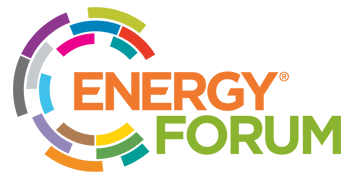Key Highlights
- Hydrogen's scalability allows for long-term seasonal storage.
- Hydrogen storage is unique, and hydrogen combustion does not release CO2.
- With a worldwide hydrogen infrastructure, hydrogen can link industrial hubs of energy demand, like Europe, to RES-rich regions.
- Mitsubishi Power and Magnum Renewable Development are building the Utah-based Advanced Clean Energy Storage Project.
- DOE officials advised the Great Lakes Clean Hydrogen coalition (GLCH) to apply for a hydrogen hub. The Appalachian Regional Clean Hydrogen Hub (ARCH2) and Pacific Northwest Hydrogen Association (PNWH2) were also urged to submit hydrogen hub applications.
- ABO Wind will build a wind turbine with an electrolyser, while BP will explore a green German hydrogen hub.
- Hydrogen UK's new analysis shows that a strong hydrogen economy is needed to meet net zero and energy security targets.
There is an urgent need to transition toward clean energy sources such as hydrogen as part of the worldwide effort to minimise emissions of greenhouse gases. In addition to hydrogen, various other potential sources of renewable energy, such as onshore and offshore wind farms, solar energy, marine energy, nuclear energy, and so on, are being explored in the quest to reach Net Zero in the future. With the help of these new alternative energy sources, countries would be able to reduce their carbon emissions.
Hydrogen's Role in Achieving Net Zero and Ensuring Energy Security
The ability of humans to obtain and maintain their basic necessities is impacted by the availability of energy. The ability of humans to obtain and maintain their necessities is impacted by the availability of energy. It helps a nation's economy expand, which in turn contributes to political stability and the general development and safety of other industries.
The connection between hydrogen and renewable energy sources offers the possibility of energy storage. Hydrogen has a number of benefits, one of which is its scalability, which is particularly useful for enabling long-term seasonal storage. Renewable energy can be changed into hydrogen, which can be stored and then changed back into electricity when needed.
Electrolysis is a method that can be used to produce green hydrogen from renewable sources at a cost that is decreasing in tandem with the falling price of wind turbines and solar PV panels.
Hydrogen offers a one-of-a-kind storage solution that may be put to use, and the combustion of hydrogen does not result in the release of any CO2 emissions. After an excess supply of clean energy is transformed into green hydrogen, the resulting fuel can then be used to power gas turbines, which in turn creates electricity on demand.
Hydrogen can also work in conjunction with battery-based solutions to give the grid more flexibility while simultaneously supplying energy on a much larger scale. During times of peak demand for the nation's energy grid, this environmentally friendly alternative to natural gas and other fossil fuels can be put to work to supply baseload backup power.
Importantly, hydrogen may also assist in offering carbon-free electricity even when renewable energy systems (RES) are not producing any. Hydrogen has the ability to connect industrial hubs of energy demand, such as Europe, with locations throughout the world that have a high potential for RES through a global hydrogen infrastructure.
Green Hydrogen Initiatives
Multiple countries are each responsible for their own share of the numerous green hydrogen-related projects now in development.
The Advanced Clean Energy Storage Project
The Advanced Clean Energy Storage Project is being constructed in the state of Utah in the United States by Mitsubishi Power in collaboration with Magnum Renewable Development. This project is aiming to become the largest renewable energy storage facility in the world.
The excess renewable energy that is created will be used to generate renewable hydrogen, which will then be stored in a network of underground salt caverns. One of the caverns being developed as part of the Advanced Clean Energy Storage project will be capable of storing enough renewable hydrogen to supply 150,000 MWh of clean energy storage.
The caverns are being built next to the Intermountain Power Plant. Because of its convenient proximity, the project can tap into preexisting power lines. The proximity of the Intermountain Power Renewal Project and the Advanced Renewable Energy Storage project could also eliminate the need for long-distance hydrogen pipelines.
Regional Clean Hydrogen Hub Applications in the US
U.S. Department of Energy (DOE) officials reportedly encouraged the Great Lakes Clean Hydrogen coalition (GLCH) to apply for a hydrogen hub. The Department of Energy reported receiving 79 separate idea papers. GLCH is one of 33 projects that have been given the green light to move forward with the full application.
Up to $7 billion is available under the Department of Energy's Regional Clean Hydrogen Hubs programme, with the goal of creating six to ten such hubs around the United States. The Appalachian Regional Clean Hydrogen Hub (ARCH2) and the Pacific Northwest Hydrogen Association (PNWH2) are two other groups that said they were encouraged to send in full applications for hydrogen hubs.
Germany Is Home to Two Green Hydrogen Hubs Projects
- As part of its green hydrogen pilot project in Germany, ABO Wind has announced its intention to construct a wind turbine coupled with an electrolyser. A wind turbine will be connected directly to a 5MW electrolyser at this site in Hünfeld's "Hessisches Kegelspiel" industrial park. Trucks and buses can refill their hydrogen tanks at the green hydrogen station. The 4.8 MW wind generator's permit application has been sent in.
- BP will look into the potential of establishing a new green hydrogen hub in Germany. BP has stated that the plant, which would be built in Wilhelmshaven, could begin producing 130,000 metric tonnes of low-carbon hydrogen from green ammonia per year by 2028. One of the country's most significant energy terminals, Wilhelmshaven is ideally situated to facilitate energy transition efforts because of its deep-water harbour and pipeline system. Also, BP's plans call for converting the existing oil and gas pipes to carry hydrogen. As a result, clients in the Ruhr area and other demand hubs might receive the low-carbon hydrogen.
Accelerating The Deployment of Hydrogen Networks in the UK
According to a new analysis by Hydrogen UK, a robust hydrogen economy is necessary to achieve the net zero goals and fulfil the UK's demand for energy security. Hydrogen UK and its members compiled this paper, which includes five essential suggestions for accelerating hydrogen networks to improve the UK hydrogen industry.
Know more about the latest in hydrogen technology at All-Energy's Hydrogen Hub
When applied to the world's pressing energy problems, hydrogen provides a promising solution. It provides options for decarbonizing industries where it has been challenging to cut emissions, such as long-distance transportation, chemicals, and iron and steel. While its use is widespread in certain sectors, hydrogen has yet to fulfil its potential in aiding sustainable energy transitions. Overcoming obstacles and lowering costs will require ambitious, targeted, and near-term efforts.
Whether you have previously participated in All-Energy & Dcarbonise, or are joining us for the first time, we look forward to seeing you in Glasgow in May 10-11, 2023

